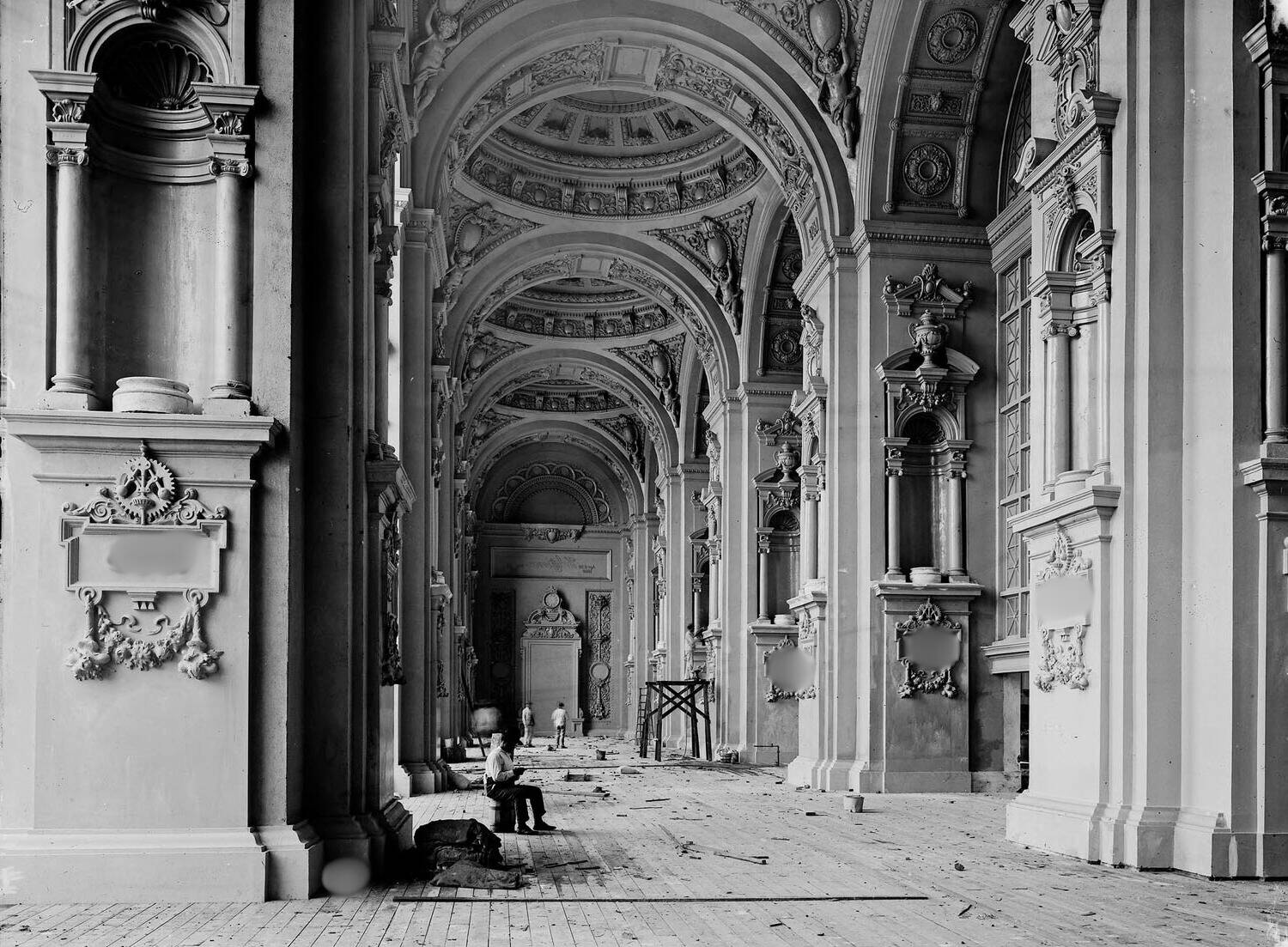
Did you know the St. Louis World's Fair of 1904 introduced the world to some of today's favorite treats? This iconic event, officially known as the Louisiana Purchase Exposition, celebrated the centennial of the Louisiana Purchase. It wasn't just about food; the fair showcased groundbreaking inventions, cultural exhibits, and architectural marvels. Over 20 million people attended, making it one of the largest fairs ever. Imagine seeing the first public demonstration of the X-ray machine or tasting ice cream in a cone for the first time! Dive into these 35 fascinating facts about the St. Louis World's Fair and discover how it shaped modern culture.
Key Takeaways:
- The St. Louis World's Fair in 1904 celebrated the Louisiana Purchase and showcased groundbreaking technology, cultural exhibits, and culinary delights, leaving a lasting impact on the city and the world.
- The fair introduced the world to the ice cream cone, Dr. Pepper, and the hamburger, while also hosting the 1904 Summer Olympics and attracting famous visitors like Helen Keller and Thomas Edison.
The Grand Opening
The St. Louis World's Fair, also known as the Louisiana Purchase Exposition, was a monumental event in American history. Held in 1904, it showcased innovation, culture, and entertainment from around the globe. Let's dive into some fascinating facts about this historic fair.
-
The fair opened on April 30, 1904, and ran until December 1, 1904, spanning over seven months.
-
It commemorated the centennial of the Louisiana Purchase, which doubled the size of the United States in 1803.
-
President Theodore Roosevelt officially opened the fair by pressing a telegraph key from the White House.
Architectural Marvels
The fairgrounds were a sight to behold, featuring stunning architecture and grand pavilions. Here are some highlights.
-
The fair covered 1,200 acres in Forest Park, making it one of the largest fairs ever held.
-
The iconic Festival Hall, designed by architect Cass Gilbert, could seat 3,500 people and hosted numerous concerts and events.
-
The Palace of Agriculture was the largest building at the fair, covering 20 acres.
Technological Innovations
The St. Louis World's Fair was a showcase for cutting-edge technology and inventions of the time.
-
The fair introduced the world to the wireless telegraph, a precursor to modern radio communication.
-
The X-ray machine, a groundbreaking medical device, was demonstrated to the public for the first time.
-
The fair featured an early version of the fax machine, known as the telautograph, which could send handwritten messages over long distances.
Cultural Exhibits
The fair was a melting pot of cultures, with exhibits from around the world.
-
The Philippine Exposition showcased the diverse cultures and traditions of the Philippines, which had recently become a U.S. territory.
-
The Japanese Pavilion featured traditional tea ceremonies, gardens, and art, giving Americans a glimpse into Japanese culture.
-
The fair included a replica of the ancient Roman city of Pompeii, complete with streets, houses, and artifacts.
Culinary Delights
Food played a significant role at the fair, introducing visitors to new and exciting flavors.
-
The ice cream cone was popularized at the fair, thanks to a Syrian concessionaire named Ernest Hamwi.
-
Dr. Pepper, a soft drink invented in the 1880s, gained national attention at the fair.
-
The fair introduced the world to the hamburger, served by a vendor named Fletcher Davis.
Entertainment and Attractions
The fair offered a wide range of entertainment options for visitors of all ages.
-
The Ferris wheel, originally introduced at the 1893 Chicago World's Fair, made a return appearance in St. Louis.
-
The Pike, a mile-long amusement area, featured rides, games, and sideshows, including a popular exhibit called "Creation."
-
The fair hosted the 1904 Summer Olympics, the first time the games were held in the United States.
Notable Visitors
The fair attracted millions of visitors, including some famous faces.
-
Helen Keller, the renowned author and activist, visited the fair and gave a speech on disability rights.
-
Thomas Edison, the famous inventor, attended the fair and showcased his latest inventions.
-
Buffalo Bill Cody brought his Wild West Show to the fair, entertaining crowds with cowboy stunts and reenactments.
Lasting Impact
The St. Louis World's Fair left a lasting legacy on the city and the world.
-
The fair led to the creation of the St. Louis Art Museum, which still stands in Forest Park today.
-
The fair's influence can be seen in the architecture of many buildings in St. Louis, including the Central Library and the Missouri History Museum.
-
The fair inspired the creation of the song "Meet Me in St. Louis, Louis," which became a popular tune of the era.
Fun Facts
Here are some quirky and lesser-known facts about the St. Louis World's Fair.
-
The fair featured a "human zoo," where indigenous people from various countries were displayed in recreated villages.
-
The fair introduced the world to the game of Pogs, a popular children's game in the 1990s.
-
The fair's electricity bill was a staggering $1 million, a huge sum at the time.
The Fair's End
As the fair came to a close, its impact continued to be felt for years to come.
-
The fairgrounds were dismantled, and many of the buildings were demolished or repurposed.
-
The fair's legacy lives on in the St. Louis Zoo, which was established in Forest Park after the fair ended.
-
The fair's influence can still be seen in the city's annual Fair St. Louis celebration, which commemorates the event.
The Fair in Popular Culture
The St. Louis World's Fair has been immortalized in various forms of media.
-
The fair was the setting for the 1944 film "Meet Me in St. Louis," starring Judy Garland.
-
The fair was featured in the 1993 novel "The Devil in the White City" by Erik Larson, which explores the history of the 1893 Chicago World's Fair.
-
The fair has been referenced in numerous TV shows, including "The Simpsons" and "Mad Men."
The Fair's Global Impact
The St. Louis World's Fair had a significant impact on the world stage.
-
The fair helped to strengthen diplomatic relations between the United States and other countries, as many nations participated in the event.
-
The fair showcased the United States as a rising global power, demonstrating its technological and cultural advancements to the world.
The Lasting Legacy of the St. Louis World's Fair
The St. Louis World's Fair of 1904 left a lasting mark on history. It introduced innovations like the ice cream cone, Dr Pepper, and the X-ray machine to the public. The fair also showcased cultural exhibits from around the globe, fostering a sense of global unity and curiosity. Many architectural marvels and artistic displays from the fair influenced future designs and styles.
The fair's impact on technology, culture, and architecture continues to be felt today. It wasn't just an event; it was a catalyst for change and progress. The memories and innovations from the St. Louis World's Fair still resonate, reminding us of a time when the world came together to celebrate human achievement and potential.
Frequently Asked Questions
Was this page helpful?
Our commitment to delivering trustworthy and engaging content is at the heart of what we do. Each fact on our site is contributed by real users like you, bringing a wealth of diverse insights and information. To ensure the highest standards of accuracy and reliability, our dedicated editors meticulously review each submission. This process guarantees that the facts we share are not only fascinating but also credible. Trust in our commitment to quality and authenticity as you explore and learn with us.


